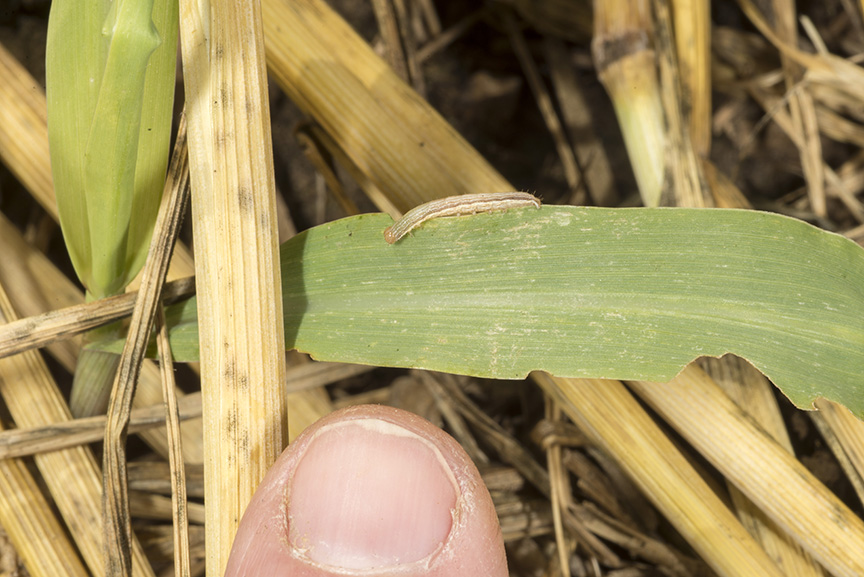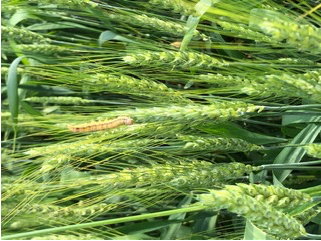Armyworm moth captures have varied throughout the state, with some being quite impressive this spring (see “Armyworm Pheromone Trap Report”). The beginning of armyworm damage is just being noticed in Tippecanoe County; when larvae are small, their damage is negligible and easily overlooked. High-risk crops should be monitored for the next several weeks. Moths prefer to lay their eggs on dense grassy vegetation (e.g., wheat, grass hay, and grass cover crops). Larval development, has been slow with recent cooler temperatures, but will quicken with the current warming trend. Larger worms, >0.75 inch, mean bigger mouths and appetite!
Corn – Corn that has been no-tilled into, or growing adjacent to, a grass cover crop (especially cereal rye) should be inspected immediately for armyworm feeding. Hatched larvae will move from the dying grasses to emerging/emerged corn. Armyworm feeding, done at night, gives corn a ragged appearance, with feeding extending from the leaf margin toward the midrib. When larvae are numerous and/or large, damage may be so extensive that most of the plant, with the exception of the midrib and stalk, is consumed. A highly damaged plant may recover if the growing point has not been destroyed. If more than 50% of the plants show armyworm feeding, and live larvae less than 1-1/4 inches long are numerous in the field, control may be necessary. Larvae greater than 1-1/4 inches consume a large amount of leaf tissue and are more difficult to control. If armyworm are detected migrating from border areas or waterways within fields, spot treatments in these areas are possible if the problem is identified early enough. Seed-applied insecticides provide no protection from this pest, and some Bt-corn may suppress small larvae, but not once the worms are “marching.”
Wheat & Grass Pasture – Examine plants in different areas of a field, especially where plant growth is dense. Look for flag leaf feeding, clipped heads, and armyworm droppings on the ground. Shake the plants and count the number of armyworm larvae on the ground and under plant debris. On sunny days, the armyworm will take shelter under crop residue or soil clods. If counts average approximately 5 or more per linear foot of row, the worms are less than 1-1/4 inches long, and leaf feeding is evident, control may be justified. If larvae are present and they are destroying the flag leaves or the heads, treat immediately.
Addendum: as this edition of the Pest&Crop was ready to be sent, I received an armyworm update from Gene Flaningam, crop consultant in southwestern Indiana. As the included picture shows, armyworm larvae are large and beginning to feed on wheat heads. Too, he indicated that armyworm are “marching” across the neighboring road. This should be a further encouragement for scouting high-risk crops!

Degrees of armyworm feeding on small grain leaves, notice the window-pane damage from very small larvae.




